Noirvember 2019: Double Indemnity (1944) Billy Wilder
- awolverton77
- Nov 8, 2019
- 6 min read
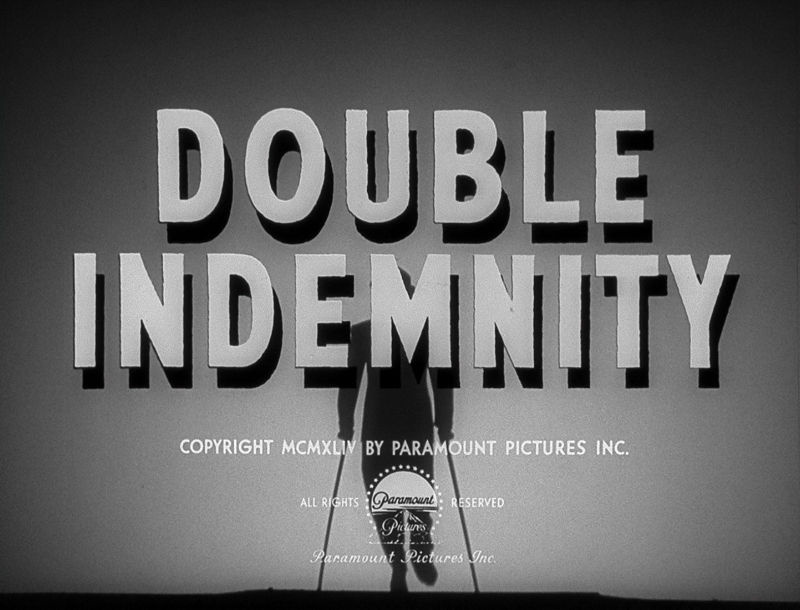
Double Indemnity (1944)
Directed by Billy Wilder
Produced by Joseph Sistrom
Screenplay by Raymond Chandler and Billy Wilder
Based on the novel by James M. Cain
Cinematography by John Seitz
Edited by Doane Harrison
Music by Miklós Rózsa
Paramount Pictures
(1:47) Paramount Blu-ray
The first film in the Noirvember Film Noir Festival at the Severna Park Library
About nine or ten months ago, I realized that while I’d been introducing, showing, and discussing movies at my library for more than three years, I’d never hosted a film noir festival. Bogart would no doubt call me a sap, and he’d be right. Well, better late than never. Months ago I began planning our first film noir festival at the Severna Park Library. Our Great Movies series normally occurs on the first Thursday of the month, so I decided to program a film noir for each Thursday in Noirvember (exclucing, of course, Thanksgiving). I had three films to choose, but which three?
We have a regular core audience at our movie events, people I can depend on to show up for just about anything I program, and a handful of them are film noir fans. Yet several attendees frequently ask me questions about film noir. “What exactly is film noir?” or “What is it about ____________________ (name your film) that makes it film noir?” or "I just watched ___________________. Is that a film noir? What about more current movies? What do you think?”
While we definitely have some noir-heads in our library movie audiences, I knew we have others with lots of questions. A brief “introduction to film noir” as a pre-screening activity seemed like a good idea, so I got to work on a mini-presentation. But I still didn’t know which films to show. I contacted the experts, Eddie Muller and Alan K. Rode, and asked them: “If I could only show three movies to give people an idea of what film noir is all about, which three should I pick?” They both chose three titles that were already on my long list: Double Indemnity (1944), The Killers (1946) and Out of the Past (1947). I decided to program them in the order they were released.
As the presenter of these films, I always have a lot of decisions to make, primarily at what time to start the film. Our library closes on Thursdays at 9pm, which means the large meeting room where we screen the films needs to be cleared out by 8:45. If I show a 107 minute movie like Double Indemnity, allowing time for discussion afterward, I’ll need to start it at 6:15, which barely gives me time for a 5-minute introduction to the film. (Last night, I took 10 minutes. You should never get me started…)
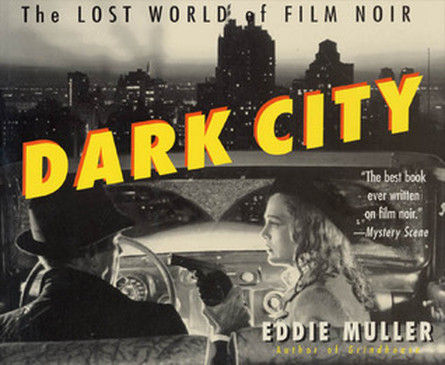
During that introduction, I wanted to give a whirlwind overview of the origins and development of film noir (including a working definition of the term), as well as setting the stage for the film we’re about to watch. To kick off our little festival, I talked briefly about what film noir actually is, using a statement from Eddie Muller, host of TCM’s Noir Alley and author of the book Dark City: The Lost World of Film Noir, that “Film noir is one of the only organic artistic movements in Hollywood history.” I also talked about the difference between crime pictures (dealing primarily with professional criminals) and film noir pictures (usually everyday people caught up in circumstances that force them into criminal activity or complicity in criminal activity). Also, as I recently heard Muller say at a Noir City festival, “Film noir is what happens when you don’t call the police.”
I also briefly discussed the “look” of film noir that came from European filmmakers who immigrated to America at the outbreak of WWII, the influence of German Expressionism, high-contrast lighting, stories of deception and betrayal, the ideologies that changed after the war, feelings of discontent and dread, and much more.
Although writer James M. Cain’s sordid novel The Postman Always Rings Twice (1934) - a novel that was considered just one step above pornography - had a long road to the big screen (finally arriving in 1946), his short novel Double Indemnity (1943) came on the scene when the strictures of the Production Code were beginning to loosen a bit. Still, making the film was no easy task, particularly in securing actors who wanted to star in the production. Most of the actors we often associate with film noir - Robert Mitchum, Burt Lancaster, Kirk Douglas - hadn’t really come on the scene yet.
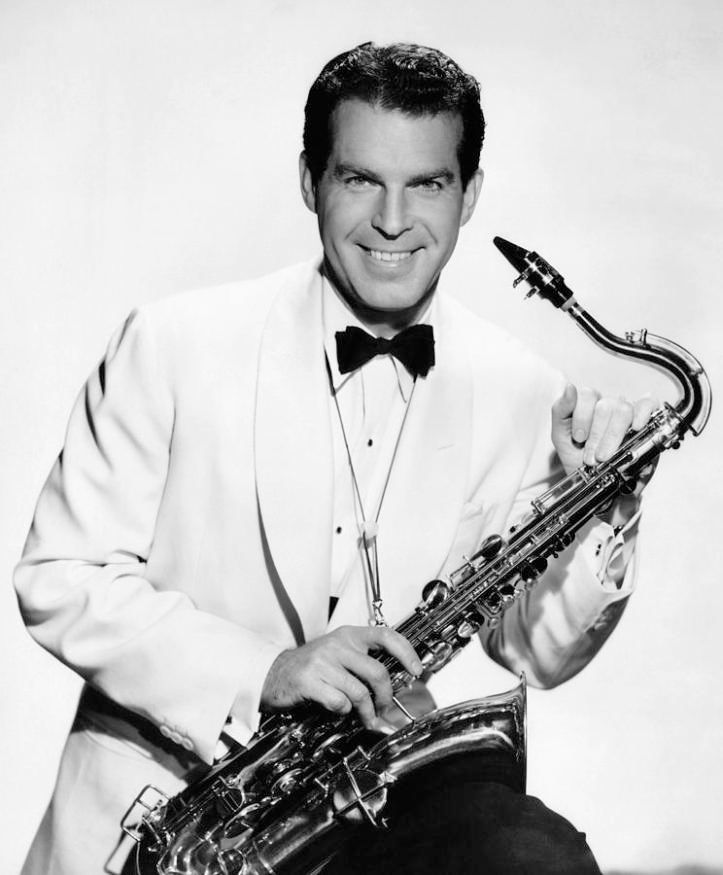
Director Billy Wilder’s stroke of genius was in casting Fred MacMurray as Walter Neff. MacMurray was an all-around good guy, a saxophone player in a dance band who stared in light comedies. He’s the type of guy you’d let your sister date. MacMurray didn’t know if he could do the role, if he could channel the sex-crazed, willing-to-murder character of Walter Neff, but he nailed it. It was the best role he ever got.

Barbara Stanwyck had more at stake. She was very professional, very intelligent, and not at all a diva. For quite a few years, Stanwyck was not only the highest-paid actress in Hollywood, she was the highest-paid woman in America. She feared the role of Phillis Dietrichson - a cheap, trashy blonde - would ruin her career. Ironically, Stanwyck was at least partially responsible for the invention of the Production Code, playing bad-girl roles in such 1930s movies as Night Nurse, Baby Face, and Ladies of Leisure. But even Stanwyck thought Double Indemnity was too sordid.
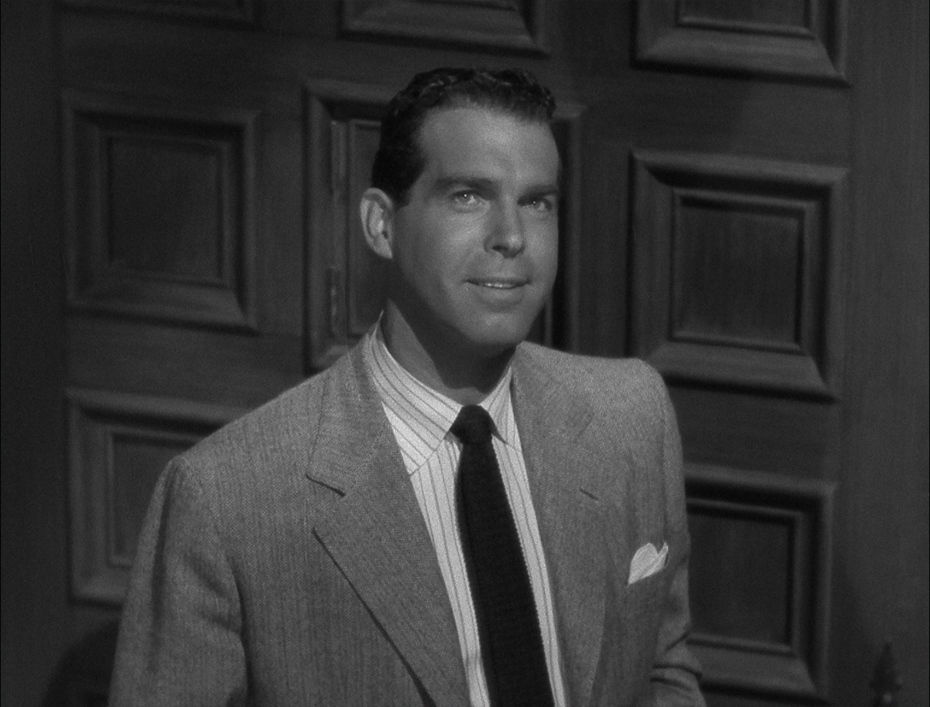
Neff is a reflection of all of us. He sees Phillis Dietrichson in that towel and ankle bracelet and it’s all over; he’s done. We might not commit adultery or murder, but we all have see something (or someone) we want, at least on some level. Neff is caught between something we wants, but should stay away from (Dietrichson) and the little voice (Barton Keyes) telling him not only that it’s wrong, but that he won’t get away with it.

Many have commented that the real relationship of substance in Double Indemnity is between Neff and Keyes. Although the both state, “I love you, too” at different times throughout the film, this is not a gay relationship, but rather one of mutual friendship, built on something that lasts much longer than what Neff had with Dietrichson.
Speaking of Keyes, Edward G. Robinson’s performance is absolutely stellar. According to accounts of people who were on the set, Robinson nailed each one of his long, rapid-fire monologues every single time. It’s a shame he wasn’t nominated for a Best Supporting Actor Oscar. In fact, during his 50-year career, Robinson was never nominated for an Oscar period. (Years later he won an honorary Oscar, as did Stanwyck, who was nominated many times, but never won.)
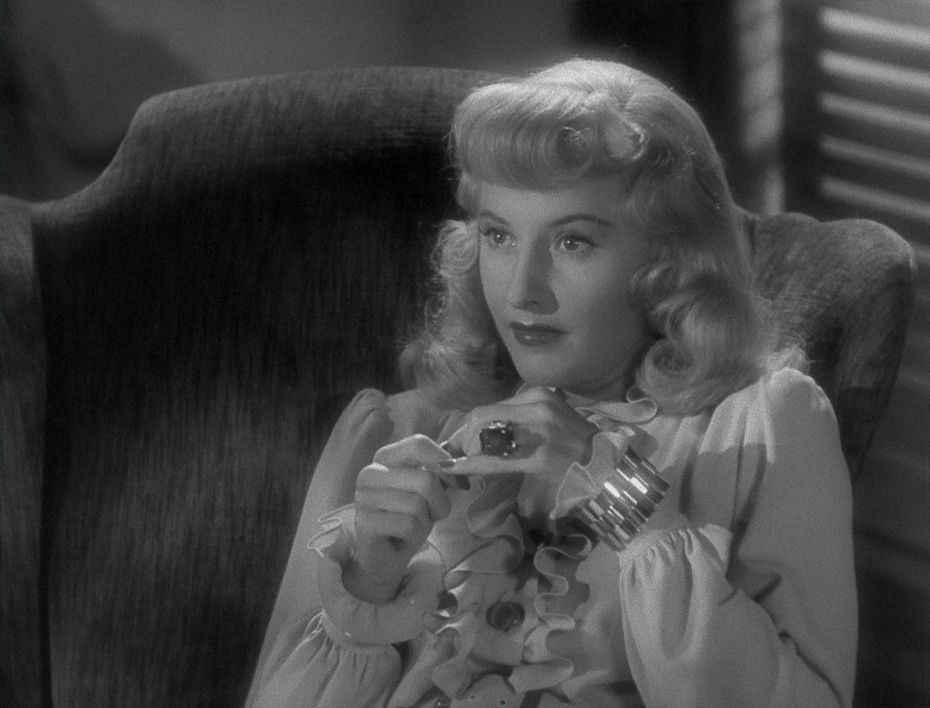
About a third of the audience had never seen the film before. I could tell that one woman in particular was new to the film since she cried out “Oh!” or drew in sharp breaths several times during suspenseful moments. Others commented on the rottenness of Dietrichson, the relationship between Neff and Keyes, and more. One audience member thought that Neff, near the end of the film, was going to try to set up Zachetti as the fall guy. Interesting…
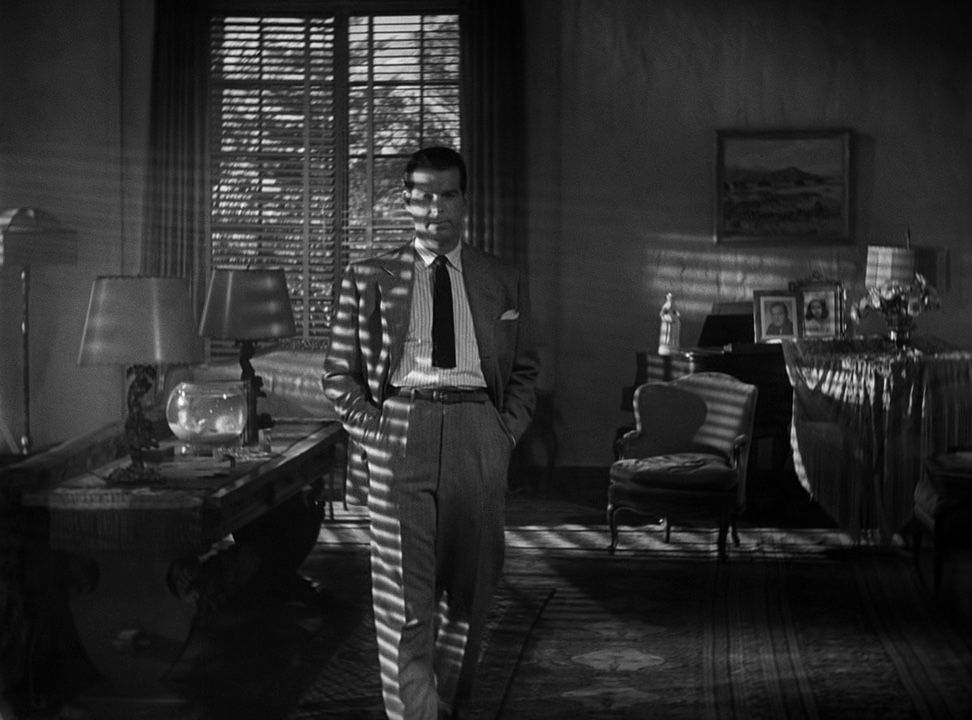
More than one person mentioned the visual style of the film, which I had alluded to a bit in my introduction, the interplay of light and shadow, the light coming through the window blinds, the general atmosphere of the Dietrichson home, and more. Another commented on how well Wilder and Chandler conveyed a sense of dread in Neff, particularly in his narration throughout the film, moments like “It was the walk of a dead man.”
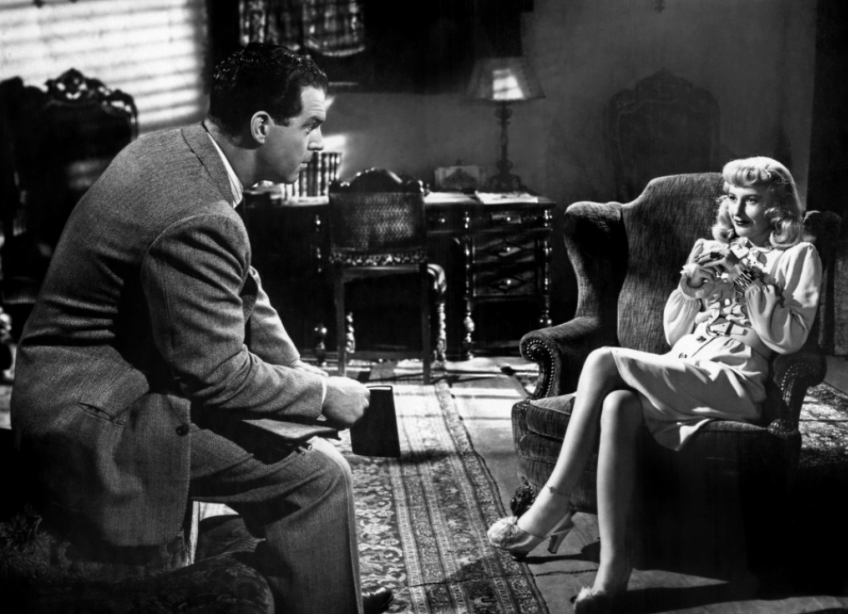
One gentleman picked up on the unnatural rapidity of the dialogue, remarking, “People don’t talk that fast. They don’t have responses ready that quickly either.” True, but such volleys of fast-paced dialogue are often a part of film noir. (And not just film noir. You see the same type of thing in several screwball comedies and other types of films from the period.)
One audience member even spotted Raymond Chandler in his brief appearance in the film.

Speaking of Chandler, one of the prizes for the drawings last night was a Modern Library collection of two Chandler novels, The Big Sleep and Farewell, My Lovely. I also gave away a DVD of Gilda (1946). See, it pays to come to our movie events!
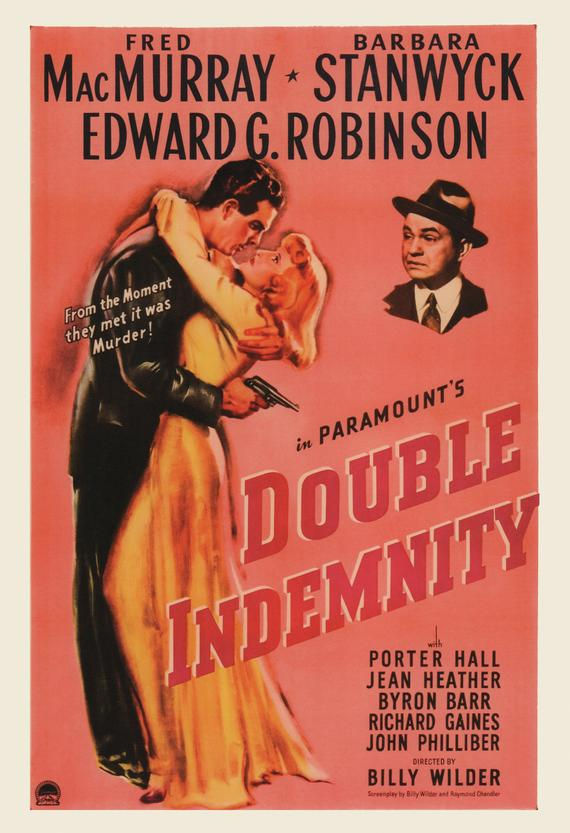
Double Indemnity is enjoying its 75th anniversary this year and I couldn't help but feel astounded that we had such an enthusiastic crowd for a movie that's 75 years old. I also feel it's a great privilege to show such a great movie to brand new audiences. I can't wait to introduce, screen, and discuss the rest of the movies in our series. And with that in mind...
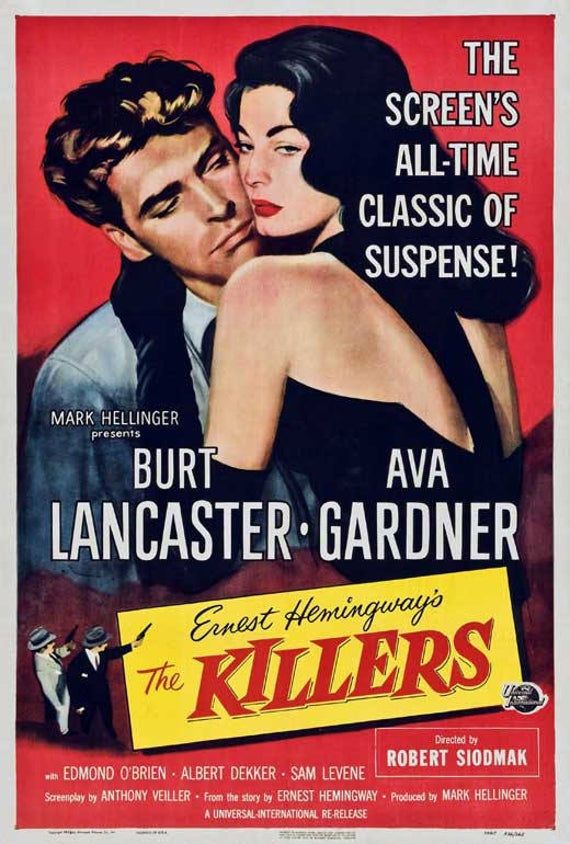
Next Thursday, November 14 at 6:15pm, our Noirvember film noir festival continues with Robert Siodmak’s The Killers (1946). I hope to see you there!
Photos: DVD Beaver, Travalanche, Britannica, Nathan Zoebl



Comments